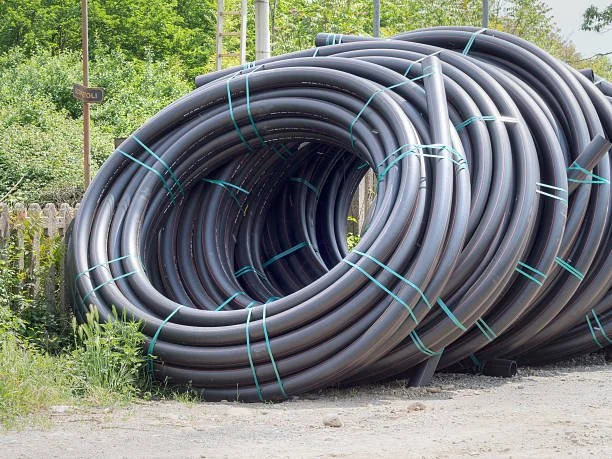HDPE, or High-Density Polyethylene, is a durable thermoplastic known for its strength, lightweight nature, and resistance to chemicals and impacts. Its linear molecular structure enhances tensile strength and stiffness, crucial for various applications. HDPE excels in packaging, piping, construction, and automotive sectors due to its exceptional mechanical, chemical, and thermal properties, making it a preferred material across industries seeking reliability and longevity.

HDPE: Structure, Properties, and Applications
Introduction to HDPE
High-Density Polyethylene (HDPE) is a versatile polymer known for its exceptional strength-to-density ratio and wide-ranging applications across various industries. It is a thermoplastic made from petroleum that exhibits a high level of crystallinity, making it durable, lightweight, and resistant to impact and chemicals. HDPE is commonly produced through the polymerization of ethylene at high temperatures and pressures, resulting in a linear polymer structure with minimal branching.
Structure of HDPE
The molecular structure of HDPE contributes significantly to its properties. Unlike low-density polyethylene (LDPE), which has a more branched structure, HDPE features a linear arrangement of polymer chains. This linear structure allows for stronger intermolecular forces, leading to higher tensile strength and stiffness. The absence of branches also enhances its density, hence the name “high-density” polyethylene.
Properties of HDPE
Mechanical Properties
HDPE boasts impressive mechanical properties, including high tensile strength and impact resistance. Its ability to withstand high impact loads makes it ideal for applications requiring toughness and durability. HDPE’s stiffness and hardness also contribute to its suitability for structural applications where rigidity is essential.
Chemical Resistance
One of the standout characteristics of HDPE is its exceptional resistance to chemicals. It is highly resistant to acids, bases, and various organic solvents, making it suitable for storage and transportation of corrosive substances. This property extends its lifespan in harsh environments where other materials may degrade.
Thermal Properties
In terms of thermal performance, HDPE exhibits a good balance between heat resistance and process ability. It has a melting point ranging from 120°C to 180°C, depending on the grade and processing conditions. This thermal stability allows HDPE to be easily molded and fabricated into complex shapes using techniques such as injection molding and extrusion.
Environmental Resistance
HDPE is known for its excellent environmental stress cracking resistance (ESCR), which prevents it from undergoing premature failure under stress in the presence of chemical agents or environmental factors. This property makes HDPE suitable for outdoor applications such as piping systems, geomembranes, and marine structures.

Applications of HDPE
Packaging
One of the most widespread applications of HDPE is in packaging materials. Its toughness, moisture barrier properties, and resistance to chemicals make it an ideal choice for bottles, containers, and films used in the food, beverage, and pharmaceutical industries. HDPE packaging ensures product integrity and extends shelf life.
Pipes and Fittings
HDPE pipes are extensively used in municipal and industrial applications for transporting water, chemicals, and gases. The material’s high strength and corrosion resistance make it a reliable choice for underground and above-ground piping systems. HDPE fittings complement the pipes, offering leak-free joints and long-term performance.
Construction
In the construction sector, HDPE finds applications in geomembranes, liners, and sheets used for environmental containment systems, landfills, and reservoirs. Its ability to withstand environmental stress cracking and chemical exposure makes it a preferred material for civil engineering projects requiring durable and reliable solutions.
Automotive and Transportation
HDPE’s lightweight nature and impact resistance make it suitable for automotive components such as fuel tanks, bumpers, and door trims. It helps reduce vehicle weight, improve fuel efficiency, and enhance safety by absorbing impact energy during collisions. HDPE is also used in the manufacture of protective helmets and barriers in transportation safety.
Conclusion
In conclusion, HDPE stands out as a versatile polymer with a robust molecular structure that provides exceptional mechanical, chemical, and thermal properties. Its wide-ranging applications across industries underscore its significance as a material of choice for packaging, piping, construction, automotive, and more. As technology advances, HDPE continues to evolve, offering innovative solutions to meet the demands of modern engineering and manufacturing challenges.

FAQs about HDPE (High-Density Polyethylene)
1. What is HDPE?
HDPE, or High-Density Polyethylene, is a thermoplastic polymer known for its robustness, lightweight characteristics, and resistance to chemicals and impacts. It is widely used across industries for its versatility and durability.
2. What are the key properties of HDPE?
HDPE exhibits exceptional mechanical strength, high stiffness, and excellent resistance to chemicals and environmental stress cracking. It also has good thermal properties, allowing for easy molding and fabrication.
3. Where is HDPE commonly used?
HDPE finds extensive applications in packaging (bottles, containers), piping systems (water, gas), construction (geomembranes, liners), and automotive components (fuel tanks, bumpers) due to its reliability and longevity.
4. What are the advantages of using HDPE?
The advantages include its lightweight nature, which aids in fuel efficiency for vehicles, and its ability to withstand harsh environmental conditions and chemical exposure without degradation.
5. How is HDPE different from other plastics?
Unlike low-density polyethylene (LDPE), HDPE has a more linear molecular structure with minimal branching. This structure contributes to its higher density and enhanced mechanical properties.
6. Is HDPE recyclable?
Yes, HDPE is widely recyclable and can be reused to create new products such as bottles, pipes, and plastic lumber. Recycling HDPE helps in reducing environmental impact and conserving resources.
7. What makes HDPE suitable for packaging applications?
HDPE’s toughness, moisture barrier properties, and resistance to chemicals make it ideal for packaging food, beverages, pharmaceuticals, and other products that require protection and preservation.
8. How does HDPE contribute to sustainability?
HDPE’s recyclability, durability, and resistance to chemical degradation contribute to its sustainable profile. Its use in various applications helps in reducing material waste and environmental footprint.
9. What are the limitations of HDPE?
While HDPE offers numerous benefits, it can be susceptible to degradation under prolonged exposure to UV radiation, requiring additives or coatings for outdoor applications.
10. How can HDPE be processed?
HDPE can be processed using techniques such as injection molding, extrusion, and blow molding to create a wide range of products with varying shapes, sizes, and complexities.

